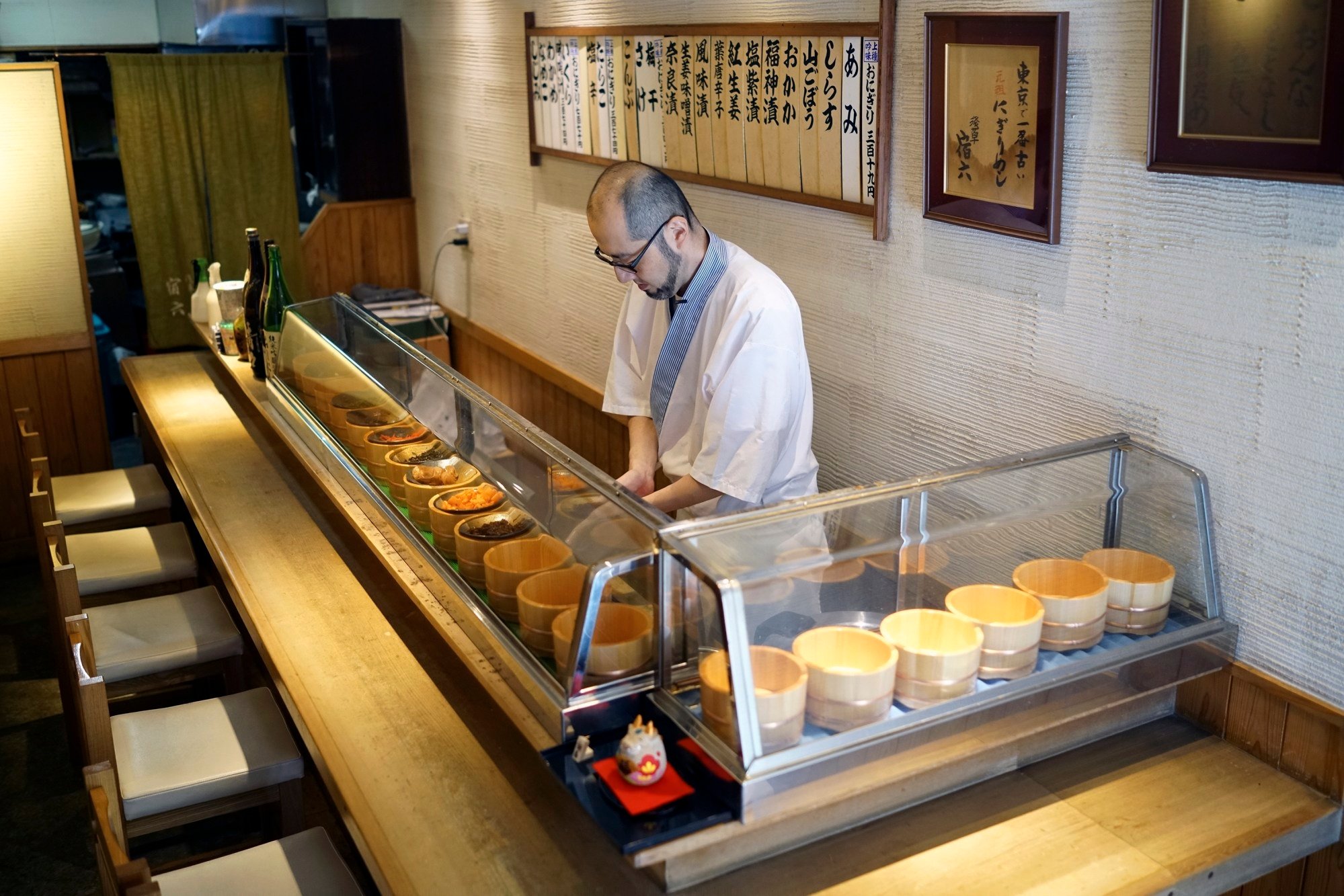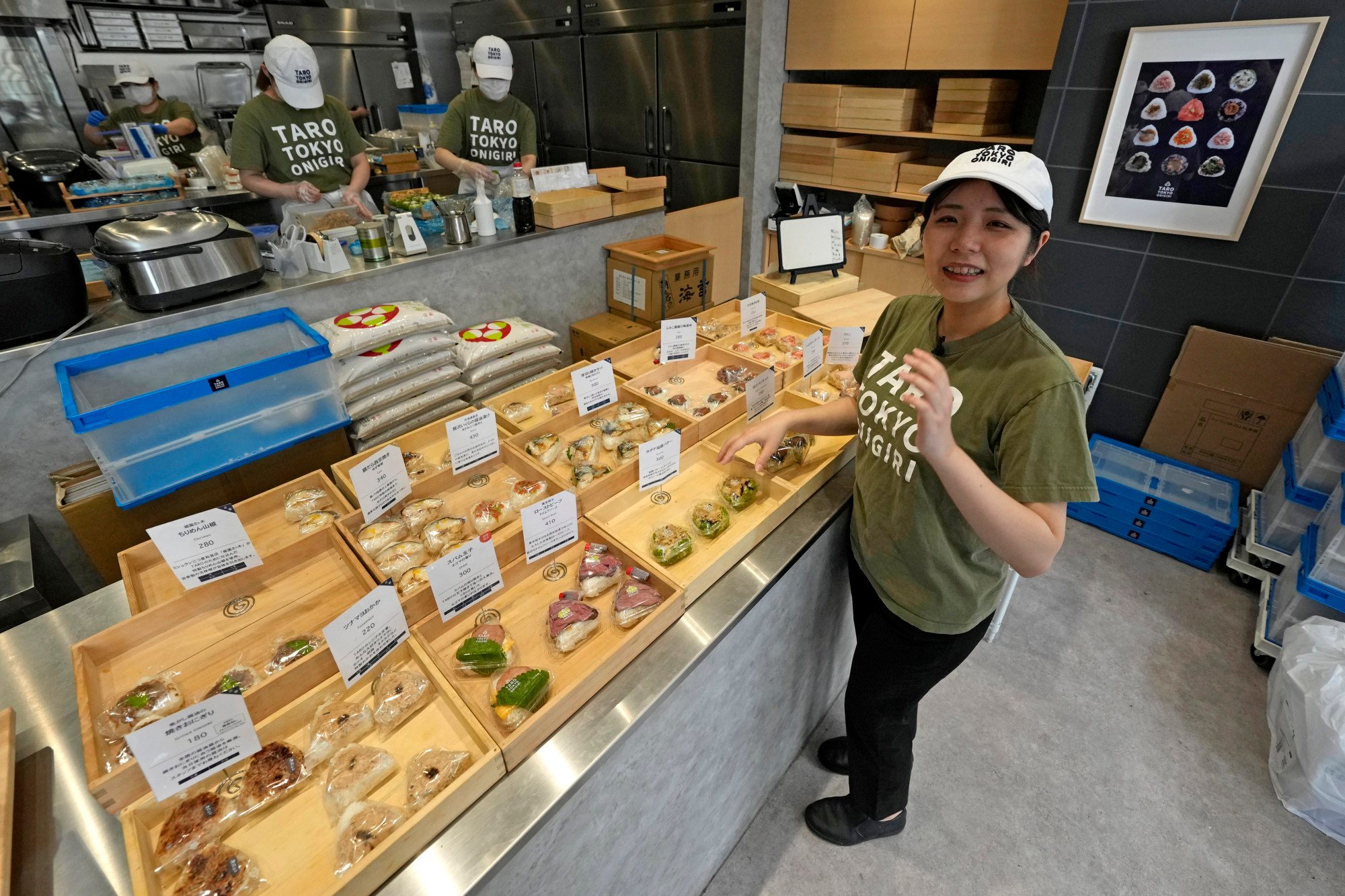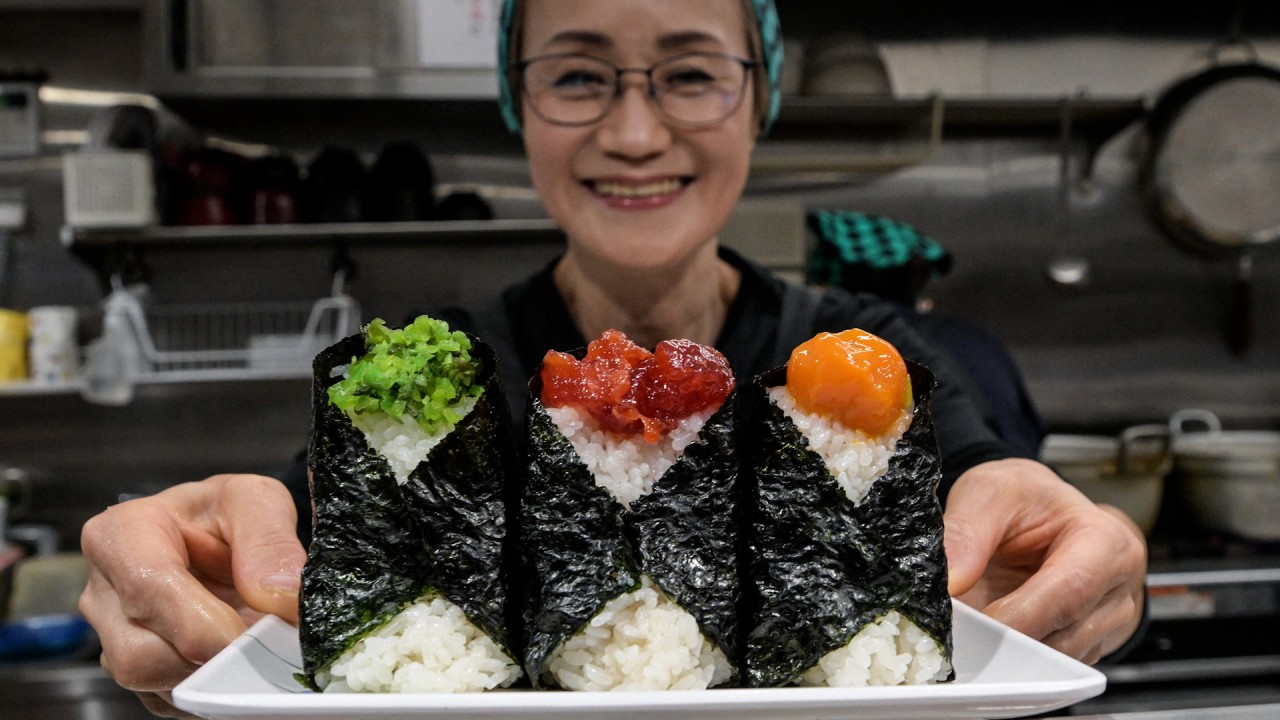How Onigiri, not as famous as Ramen or Sushi, became Japan’s soul food

Fast because it is available even in convenience stores. Slow because it uses ingredients from the sea and the mountains, he said. And soul food because it is often prepared and eaten in the company of family and friends. No tools are needed, just gently cupped hands.
“It’s also mobile – food on the go,” he said.
Onigiri in its earliest form is said to date back to at least the early 11th century; it is mentioned in Murasaki Shikibu’s The Tale of Genji. It appears in Akira Kurosawa’s classic 1954 film Seven Samurai as the ultimate thank you from the farmers.
What exactly goes into Onigiri?
The sticky nature of Japanese rice is crucial.
What is placed in it is called goodor filling. A perennial favorite is umeboshi, the salted plum. Or maybe mentaiko, which is hot, spicy roe. But in principle you can fill onigiri with anything, even sausage or cheese.
The ball is then wrapped in seaweed. Even one nice big onigiri makes a meal, although many people would eat more.

Some stick to the classic Onigiri
Yosuke Miura runs Onigiri Asakusa Yadoroku, a restaurant founded by his grandmother in 1954. Yadoroku, which roughly translates to “good-for-nothing,” is named after her husband, Miura’s grandfather. It claims to be the oldest onigiri restaurant in Tokyo.
There are only two tables. The counter has eight chairs. Takeaway is possible, but you still have to queue.
“Nobody doesn’t like onigiri,” said Miura, smiling from behind a wooden counter. In a display case in front of him are bowls of goodincluding salmon, shrimp and ginger with miso flavor. “Basically, it’s nothing special. Every Japanese person has eaten it 100 percent of the time.”
Miura is also a classical flautist and considers Onigiri to be a score handed down from his grandmother, which he will faithfully reproduce.
“In classical music, you play what’s written on the sheet music. It’s the same with onigiri,” he says. “You don’t try to do anything new.”
Yadoruku is tucked away in the picturesque old town of Tokyo called Asakusa. It opens at 11:30 a.m. and closes when rice runs out, which is usually within an hour. Then it opens again for dinner. The most expensive onigiri is 770 yen (US$4.90) with salmon roe, while the cheapest is 319 yen (US$2). This includes miso soup. Reservations are not taken.
Onigiri can be round or square, animal or star-shaped, but Miura’s standard is the triangular one. He makes them to order right in front of you and it takes just 30 seconds.
He spoons the hot rice into triangular shapes that look like cookie cutters, rubs his hands with salt, then scoops the rice with a bowl – three times to gently firm the sides. The crispy nori, or seaweed, is wrapped around the rice like a bandana, with one end facing up to keep it crispy.
The first bite consists only of nori and rice. good comes with the second bite.
“The Yadoroku Onigiri will not change until the end of the world,” Miura said with a grin.
Others want to experiment
Miyuki Kawarada runs Taro Tokyo Onigiri, which has four branches in Japan. She also has her eye on Los Angeles and then Paris. Her vision: to make onigiri the “fast food of the world.”
The name taro was chosen because it is widely available and is the Japanese equivalent of John or Michael. Onigiri, she says, is popular with most because it is easy to make, gluten-free and versatile.
And other Japanese dishes like ramen and sushi are enjoying worldwide popularity, she notes.
In their cheerful, modern shop, workers in khaki company T-shirts busily prepare the good and rice balls in a kitchen behind the cash register. The shop only offers takeaway food.
Kawarada’s Onigiri has a lot good on top, for a colorful topping, rather than inside. Each comes with a separately wrapped piece of nori to be placed around it just before eating.
Her good becomes adventurous. Cream cheese is mixed with a spicy Japanese pickle called Subscribe tofor example, and each onigiri costs 250 yen (US$1.60). Spam and egg onigiri cost 300 yen (US$1.90); the one with several types of Kombuor edible seaweed, called “Dashi Punch X3,” costs 280 yen (US$1.80).
“Onigiri is the infinite universe. We are not intimidated by traditions,” said Kawarada.

Asami Hirano, who recently stopped by while walking her dog, took a long time to choose her food at Taro Tokyo Onigiri.
“I’ve always loved onigiri since I was a kid. My mom made them,” she said.
Nicolas Foo Cheung, a Frenchman who is working as an intern nearby, has been to Taro Tokyo Onigiri a few times and likes the menu. “It’s simple food,” he said.
Miki Yamada, a food promoter, intentionally calls Onigiri Subscribe tothe other common word for rice ball, because the latter more clearly speaks to the idea of connections. She says her life’s work is to bring people together, especially since the 2011 triple earthquake, tsunami and nuclear disaster rocked her family’s rice farm in Fukushima, northeastern Japan.
“By facing Subscribe toI came across a spirituality, a kind of fundamental Japanese,” she said.
There is nothing better, she said, than simple Aizu rice Subscribe to with a pinch of salt and absolutely nothing in it.
“It gives you energy. It’s the ultimate comfort food,” she said.




